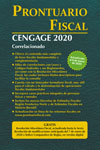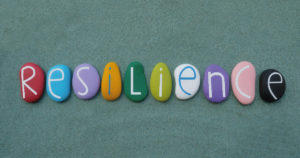Este artículo fue publicado en: diciembre 30, 2015
Imagine that a student enters an English class to find that it’s that most dreaded of days — graded paper pass-back day. As he receives his paper, his teacher begins to criticize him for his mistakes saying, «You should have known better than to write your thesis that way.» What if the teacher went on to add, «That’s the third time this month. What am I going to do with you?» before sending him to the office for his mistake?
Students who make academic mistakes are given time to review, relearn, and reassess until they master the content. But with students who fail to meet behavior expectations, more often than not we respond by assuming willful disobedience, removing students from the classroom, and assigning disciplinary consequences. When our typical responses for behavior are applied to academic issues, it’s easy to see the disparity.
Because educators are well trained to deal with academic failures and missteps, we know that this isn’t the way to handle the issues with an academic assignment. Somehow, though, it’s become an acceptable way to address student behavior.
The «He Was Told So He Should Know» Problem
Índice
As a high school teacher, I certainly didn’t think that I needed to teach behavior. I was under the impression that if I posted rules and reviewed them in class on the first day, I had done all that was required. As a result, even when it didn’t work, I often found myself returning to my list of posted rules when it was time to «review expectations.» With academic content, teachers have a number of tricks up their sleeves. They start with what students know and build from there using great models, repetition, and novelty to make student learning memorable.
Here’s what I wonder: What would happen if we taught behavior expectations with our best instructional practices?
Instead of looking at students as willfully disobeying all the good manners they’ve been taught, what if we put a process in place to teach our expectations for student behavior with the best practices often reserved for academic work? Approaching behavior expectations with our best instructional practices will allow students to internalize our expectations better and for longer.
Te puede interesar
 Prontuario Fiscal 2020
Prontuario Fiscal 2020Ir al Prontuario Fiscal 2021 -> En 2020 entrarán en vigor nuevas y numerosas disposiciones fiscales en materias tan importantes...
A Better Way
Here’s a process along with a few starter ideas to move you in the right direction, whether you’re an individual teacher or thinking about this on a campus-wide scale.
- Be clear with your expectations.
- Draft a list of memorable ways to teach these expectations (be sure to include models).
- Estimate how often you will need to reteach this lesson.
- Create a timeline.
- Establish a list of signs that indicate when it is time to reteach this expectation.
Let’s use a problem that could happen on any campus: students who don’t pick up after themselves.
At the beginning of last year, we noticed that students weren’t picking up their trash between lunches like we needed them to do. At a high school, this is something we expected them to know, but when we noticed the gap between their behavior and our expectation, we decided to approach the issue proactively using this process.
With our aim set on every student picking up his or her own trash after lunch, we calculated how long our custodial staff actually had to clean each of the 60+ table tops in the cafeteria between lunches and asked students to clean tables at that speed. We captured their efforts on video. The result was entertaining and proved our point: Since the custodial staff cannot pick up the trash from every table in time for you to sit at a table that doesn’t have trash on it, let’s all pick up our trash.
We came back to these reminders three times throughout the year. We chose hot spots (the beginning of the year, the first week of January, and the week after spring break) to reiterate our expectations. With these clearly defined expectations, students responded in the way that we hoped.
What Could You Do?
If you’re a classroom teacher and are interested in trying out this idea, here are a few questions that might serve as a good point of departure for teaching discipline:
Te puede interesar
 Cálculo de Una Variable: Trascendentes Tempranas
Cálculo de Una Variable: Trascendentes TempranasEl estudio del cálculo ayuda a los estudiantes a comprender la disciplina de manera práctica. El modo más importante de...
- What should students do when they hear my signal?
- What are the teacher’s expectations when students enter the classroom?
- What are the teacher’s expectations for electronic devices in the classroom?
- What should students do when they return from being absent?
If you want to take the schoolwide approach, consider creating lessons to consistently establish these expectations at the campus level:
- Be on time to class.
- Follow the dress code.
- Eat food in the cafeteria (and only in the cafeteria).
- At sporting events, yell for your team instead of against the opponent.
- In the hallways, stop and listen if an adult addresses you.
It’s What’s Right
On the first day of school, my English III students often heard my «you’re a day closer to being high school graduates than being middle schoolers — so let’s act like it» speech. It was pretty short little speech — in fact, you just read most of it — but I felt that was an appropriate way to address things because, by the time students enter junior year of high school, they know how to behave, right?
It wasn’t fun for me to realize that I was the one who needed to make the big change, but it needed to happen. I’m glad it did, and so were my students.
Teaching behavior expectations in the way that we know students really learn — with models and repetition — will help them learn your expectations, and help you help them learn in your classroom.
Te puede interesar
 Principios de economía
Principios de economía¿Por qué debería usted estudiar economía? La razón es sencilla: le ayudará a comprender el mundo en que vive. Existen...
See original text: http://goo.gl/Jdxhwu






